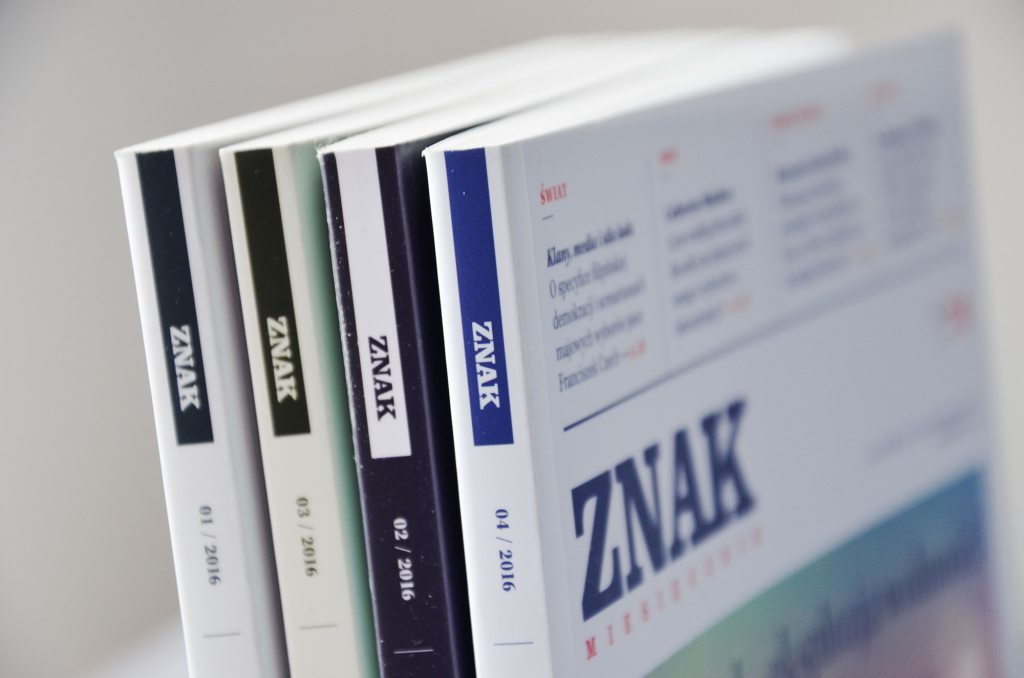
Once Upon a Time… The Eighties. On ‘Przeciąg’ by Anda Rottenberg
Były sobie lata 80. O książce Andy Rottneberg "Przeciąg. Teksty o sztuce polskiej lat 80."
Keywords: Anda Rottengerg; art in Poland; sztuka w Polsce
More...
Keywords: Anda Rottengerg; art in Poland; sztuka w Polsce
More...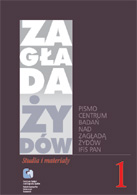
Keywords: Holocaust; Poniatowa; Erntefest; Polish–Jewish relation; Righteous among the Nations
This article contains an analysis and extensive quotations from accounts of two Jewish women, the only survivors of prisoners' execution at the Poniatowa compulsory labour camp. This execution was part of a large-scale operation to physically liquidate Jewish prisoners, the so-called “Operation Harvest” (Erntefest), carried out in the first week of November 1943 at the camps in Trawniki, Poniatowa and Majdanek (in Lublin). Both women survivors,. Due to a number of coincidences, managed to get to Warsaw and, helped by the “˚egota” – Council to Aid the Jews, lived to see the liberation. In this article I also analyse the circumstances of both accounts, reasons for withholding their publication as early as war time, and the importance , for our knowledge, not only of the executions, but also for the nature of complicated Polish–Jewish relations during World War II, because it was the Poles' help that the fate of escaped prisoners hinged upon
More...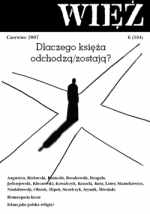
Keywords: Polish drama; Polish theatre; Polish contemporary theatre; change of social role; Catholic Church in Poland; celibacy; sexual life; emotional life of priests
On the spectacle of Przemysław Wojcieszek "Wojcieszek 5: Ja jestem zmartwychwstaniem" / "Wojcieszek 5: I Am the Resurrection" which shows the everyday struggle of an ex-priest in and with the "normal" life.
More...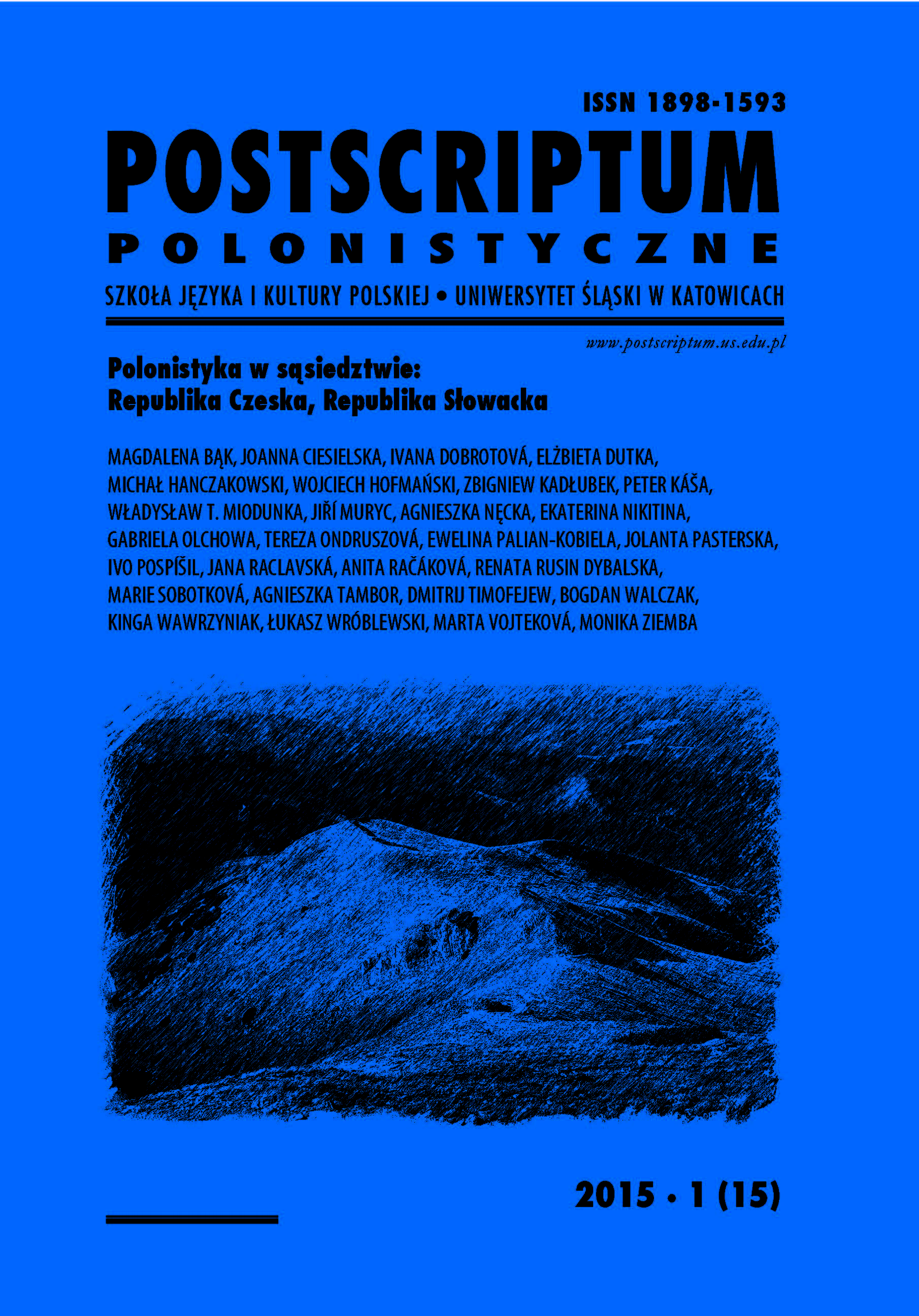
Keywords: death; media; Anna Przybylska
The article contains analyses of the several press publications that appeared in Polish tabloids after Anna Przybylska’s death in 2014. The analysed material proves that a death of a celebrity holds an importance for media mainly because of her/his previous presence in media and not because of the consolation function of a text itself. Such texts are deeply rooted in a tradition of funeral literature, yet they serve completely different purpose.
More...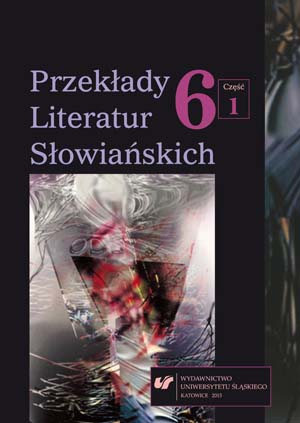
Keywords: Dubravka Ugrešić; Dorota Jovanka Ćirlić; translator`s competence; domestification; strategy of translation; literality; semantic change; translation of idioms
Looking at selected texts by Dubravka Ugrešić as translated by Dorota Jovanka Ćirlić, the most prolific contemporary Polish translator of Balkan literature, we consider the issue of presence (or absence) of an interpreter in the text. We will take a closer look at the solutions of translation, but also their importance in the context of building the position of the author, who, like the translator, acts as an ambassador.
More...![SOURCE TEXTS CONCERNING ESTABLISHMENT OF OFFICIAL’S DISTRICT AND DISTRICT CONSISTORY IN PIOTRKÓW [TRYBUNALSKI]](/api/image/getissuecoverimage?id=picture_2010_26847.jpg)
Keywords: Piotrków Trybunalski; District Consistory
Establishment of the District Consistory in Piotrków [Trybunalski] has been a reason for a controversy among historians. The basic problem was the date of its founding and its territorial range. The problem was solved after finding the proper document by the Bishop-Nominee of Kuyavia and Kalisz (kujawsko-kaliski) of 1 January 1819 reorganizing the structure of the ecclesiastical judiciary in the newly formed diocese. Some weeks later, the governor of the diocese issued another document precisely specifying the territory of the Piotrków Official’s District and naming the head of the consistory. Then the new official, after election of the persons sitting in the consistory, notified in a special letter all the concerned clergy of his act. The said documents, except the first one, were certified copies. After proper elaboration used in publication of documents they should be a valuable source of knowledge for the history of the Piotrków Consistory.
More...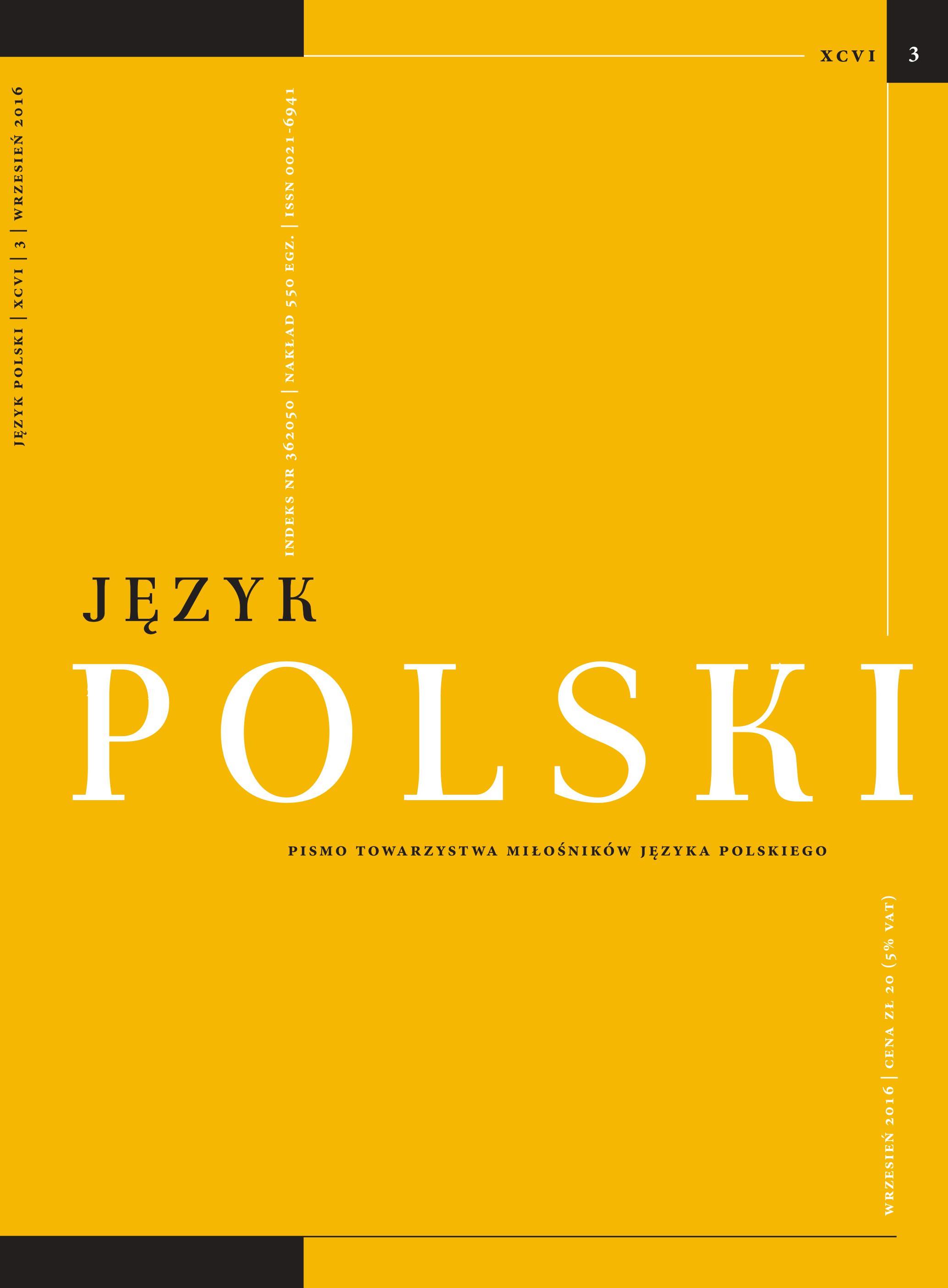
Keywords: the Kujawy region; dictionary; dialect; ethnography; folklore
The article discusses the issues of using the ethnographic material and folkloric texts in the dictionaries of dialects. The aforementioned problems have been present in the scientific discourse since 1970s. Those issues are echoed in the selection of sources creating the empirical base for the dictionary of culture and dialect of Kujawy. A lexicon that records dialectal vocabulary of different chronology allows such “crossing” of dialectologicaland ethnographic data. The collection of dialectal texts from Kujawy is too limited to constitute the basis of analyzed vocabulary. Thus, the lexicon of dialectal vocabulary will be in that case based on many specialist studies in the field of verbal folklore and material culture of the villages of Kujawy. For example, the word ‘pindyrynda’ was chosen to show how to reconstruct a polysemic name, when dialectological data are combined with ethnographic ones.
More...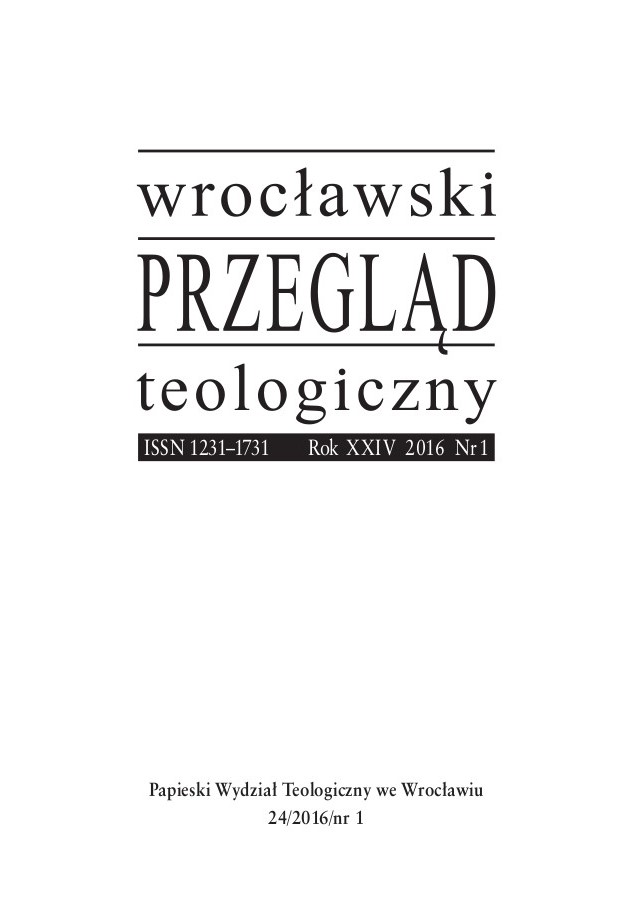
Keywords: literature;literary texts;epic texts;lyrical texts;textbook for religious education;
Literary texts show and introduce people to some useful truths and messages, moral guidelines and warnings, tips concerning the progress, ideals and guiding lights, instructions and models of the decent life. They also provide the important help in the religious education. On the basis of the textbooks for teaching the religion for junior high school from the series “Odsłonić twarz Chrystusa”, there have been presented some literary texts from these textbooks. The author portrayed some epic texts in the textbook for the first grade, lyrical texts in the textbook for the second grade and selected texts placed in the textbook for the third grade of Middle School. In each case they pointed to the connection of literary texts with the subject of the specific unit. In the textbooks chosen for analysis a great diversity of literary texts can be noticed. It intensifies the contents included in the individual subjects and can contribute to the development of faith. These literary texts present important values, such as love or family. Those values can support adolescents in overcoming many difficulties present in the modern world.
More...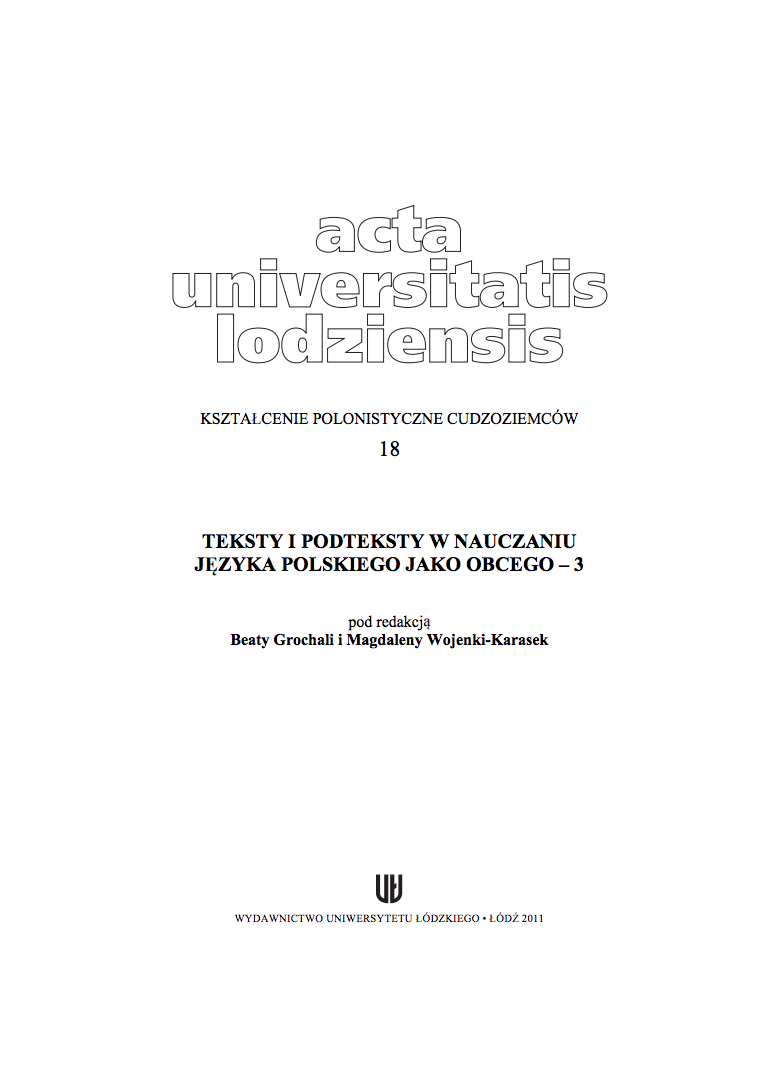
Keywords: teaching; grammar; literary text; poetic work; pretext; language analysis; exercise;
The following paper is devoted to the use of Polish poems during Polish language classes for foreigners. The texts that are discussed enable the teacher to convey both cultural and linguistic knowledge. Grammar-related issues present in the selected poems serve as a pretext to create various exercises and language games.
More...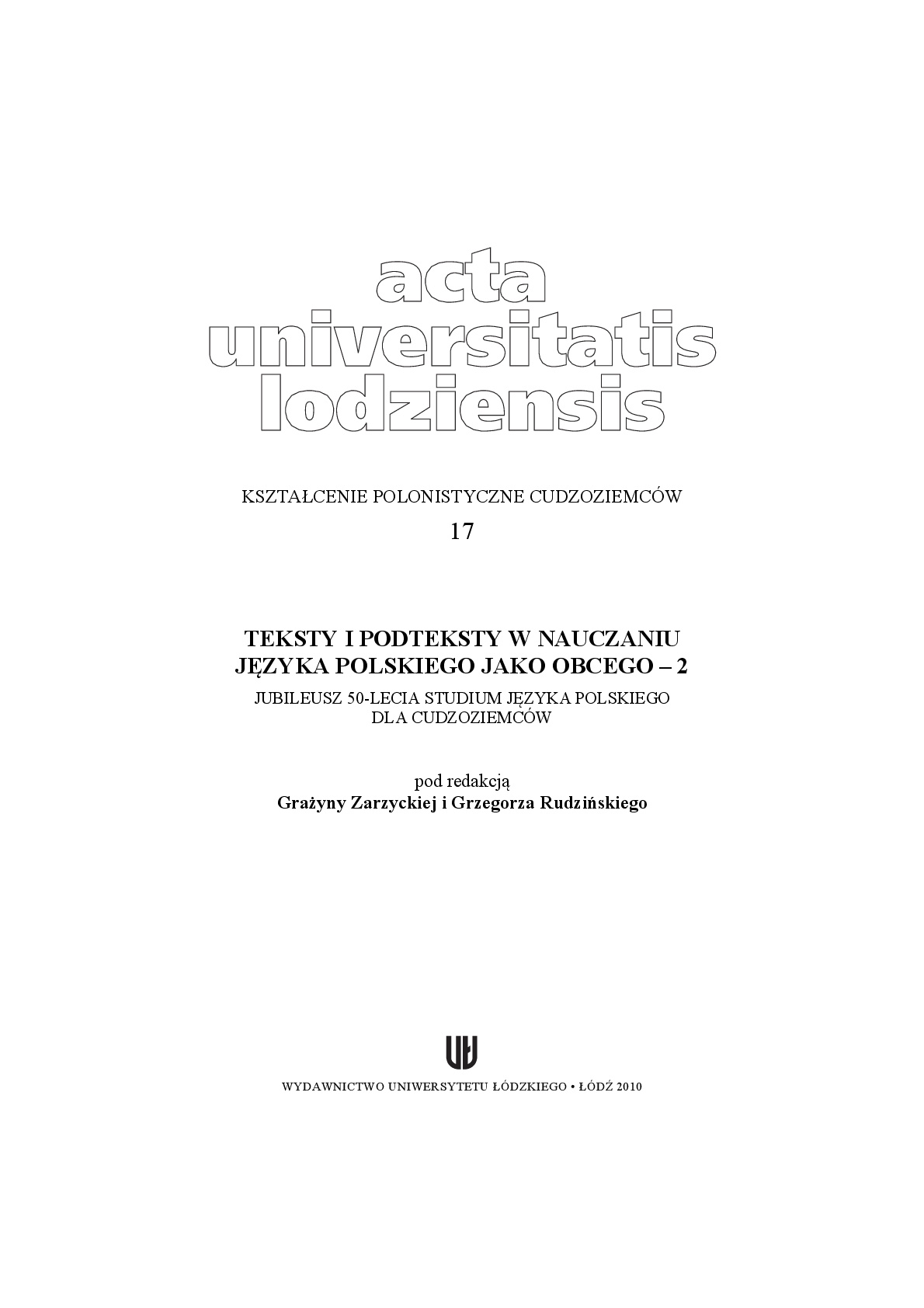
Keywords: Sławomir Mrożek; grammar; stylistics; culture;
Opowiadania Sławomira Mrożka utrzymane są w konwencji groteski literackiej, wyróżniającej się „niejednorodnością stylową, ostentacyjnie demonstrowaną inwencją słowną, łączeniem skróconych wzorców stylowych, mieszaniem mowy wykwintnej z wulgarną, kontrastowaniem sposobu wysłowienia z sytuacją wypowiedzi itp.” (Głowiński, Kostkiewiczowa i in. 2008: 188).
More...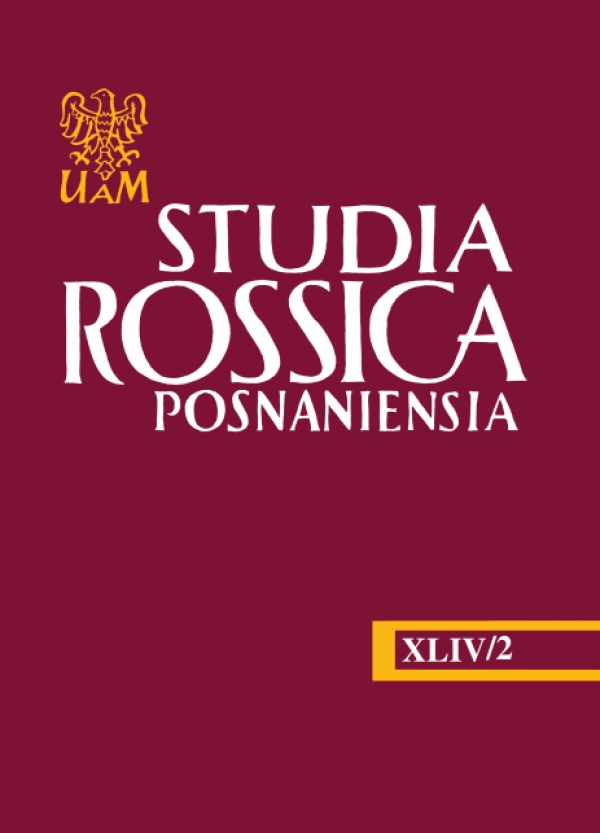
Keywords: glossary; parallel text; collocations; translation
The purpose of this article is to present the results of the research on the use of dictionaries and parallel texts in the translation process. Examples of collocations in legal texts were used in the research, and the resulting comparison shows the presence (or the absence) of the equivalents of the original units in the respective languages.
More...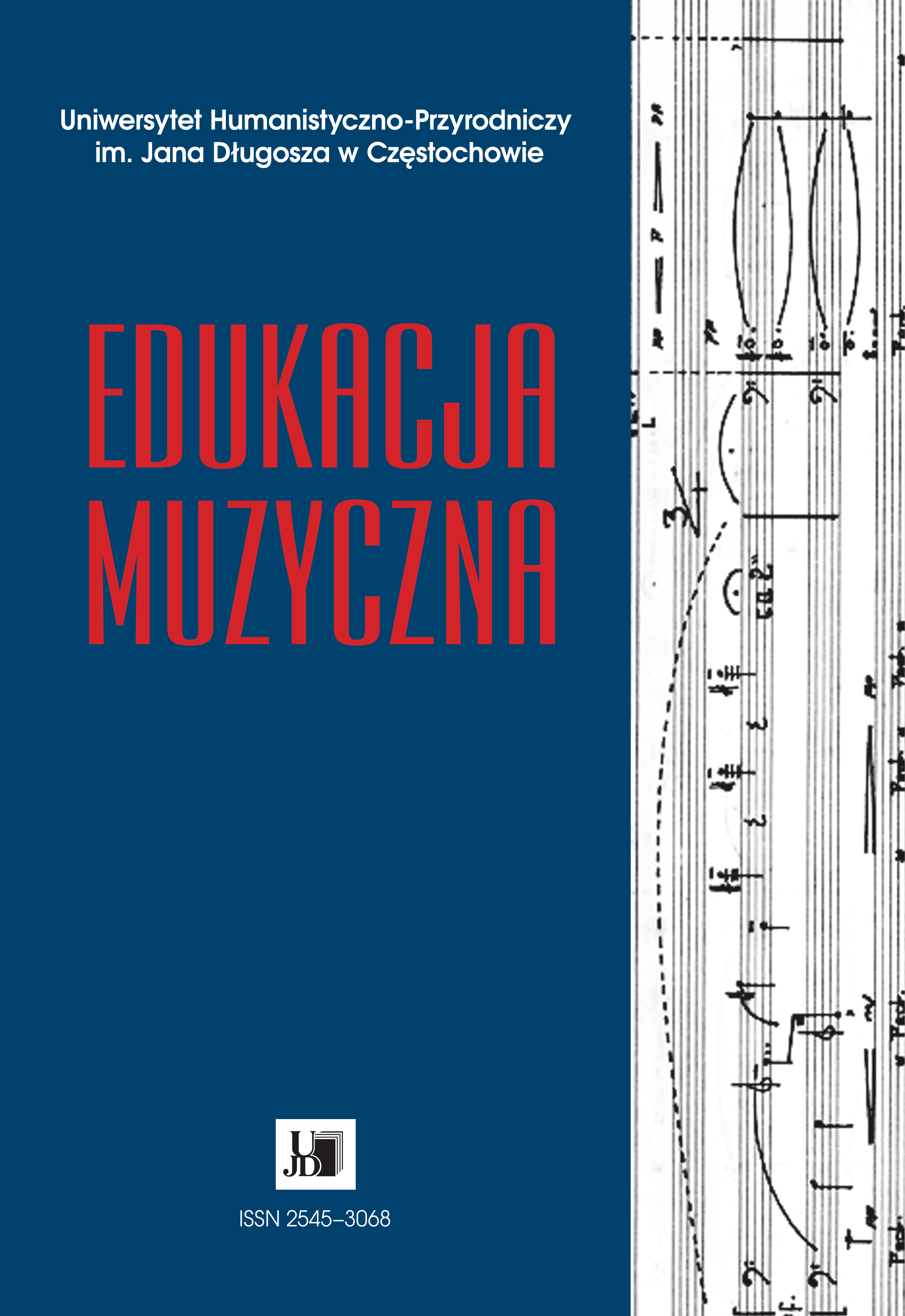
Keywords: acclamation; choir; texture; Gaia; Gregorian chant; inspirations; Łukaszewski; choral music; organ music; organ; symbolism; composing technique; Easter; Lent;
This article is devoted to my own Lenten choral and organ music. At first, I introduce my mo- tives for undertaking creative activity, which include, among others, the atmosphere of my family house (my father, Wojciech Łukaszewski, was a composer). My inspiration to take up choral music was a ten-year collaboration with the choir of the Academy of Catholic Theology (currently Cardi- nal Stefan Wyszyński University in Warsaw) under the management of the Reverend Kazimierz Szymonik. In the latter part of the article, I introduce my choral works, list the titles and then focus strictly on Passion and Paschal music. I present the circumstances in which those pieces were created, the details of their first performances and recordings, the texts they used and, furthermore, analyze them, paying attention to the most distinctive features of my composing technique and style.
More...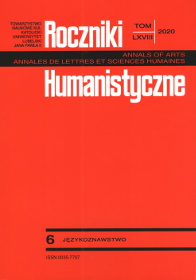
Keywords: sixteenth-century Polish language; Protestantism; religious language; sermon; linguistic means of persuasion
The paper comprises a description of the religious language used in the Renaissance. It addresses the topic of the literature of Reformation and Counter-Reformation (Catholic Revival) periods and its significance as a uniting force for a given community of believers. Moreover, the paper describes the linguistic solutions and means of persuasion used to achieve that purpose. The study material are three sixteenth-century texts: two that originated in two Christian denominations – Catholic and Protestant ones (sermons published by Piotr Skarga and Petrus Artomius on the occasion of the Assumption Feast of Mary the Virgin in 1595) and one that derives from Islam (Surah 7 of the Quran “The Heights” translated by the Tatars of the Grand Duchy of Lithuania, 16th century). The analysis covers the structure of these historical texts, the exponents of dialogue and the linguistic means of persuasion which include, among others, evaluative and directive language as well as stylistic devices. Research has shown that the three religious polemical texts can be classified as persuasive literature of the Reformation. They comprise linguistic exponents with impressive and expressive functions. In the linguistic layer, the texts contain universal features of the religious code, such as openness and polysemy, which are expressed by analogy, comparison, metonymy, metaphor, and making non-assertive utterances. The paper discusses lexis excerpted from the texts and denoting values as well as volitive and imperative and persuasive and emotive vocabulary with noticeable dichotomic references to what is good and what is bad. These elements arrange the sacred space of the religious texts and constitute the axis of integration for a given community of believers. The result of religious discourse of the Reformation is the presence of the exponents of the rhetorical style in Polish texts, which is manifested by the use of quotations from authoritative religious works, i.e. mainly from the Bible and the Quran.
More...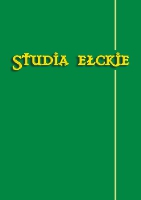
Keywords: Piotr Jaroszyński; The dispute over Europe; Clashes of civilizations
Piotr Jaroszyński, The dispute over Europe. Clashes of civilizations, Polish Society of Thomas Aquinas, Lublin 2017, publ. second extended, pp. 135.
More...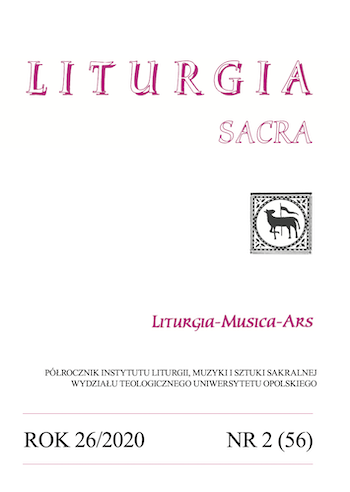
Europejska tradycja muzyczna przekazuje w zachowanych zbiorach pokaźną liczbę wielogłosowych opracowań Missa pro defunctis (np. benedyktyni w Kremsmünster, Einsiedeln, Lambach, cystersi w Stams, Heiligenkreuz, kapucyni w Pradze, urszulanki w Bratysławie). Również w repertuarze kapel muzycznych funkcjonujących przy kościołach w dawnej Rzeczpospolitej (XVII i XVIII w., w okresie zaborów w XIX w.) znajdowały się wielogłosowe kompozycje do tekstu mszy żałobnej. Requiem wykonywały zespoły działające przy kościołach klasztornych (cystersów, dominikanów, pijarów, jezuitów) oraz diecezjalnych. Były to utwory kompozytorów polskich oraz zagranicznych. W tę tradycję wpisuje się również działalność muzycznej kapeli jasnogórskiej w Częstochowie, której zachowany repertuar zawiera ponad 40 kompozycji rekwialnych pochodzących z drugiej połowy XVIII i XIX w. Są to dzieła muzyków działających przy zespole paulińskim (L. Maader, F. Gotschalk) oraz innych twórców polskich (np. M. Zwierzchowski, J. Engel, J. Elsner) i zagranicznych (m.in. W.A. Mozart, E. Pausch, J. Gotsche, J.M. Dreyer). Celem artykułu jest zaprezentowanie utworów requiem zachowanych w zbiorach Biblioteki Klasztoru oo. Paulinów na Jasnej Górze oraz ich recepcji w innych ośrodkach Polski oraz Europy. Zostanie przedstawione wykorzystanie tekstu liturgicznego mszy żałobnej oraz jego tłumaczenie i interpolacje zastosowane przez twórców, a także wskazanie funkcjonowania kompozycji Missa pro defunctis na Jasnej Górze.
More...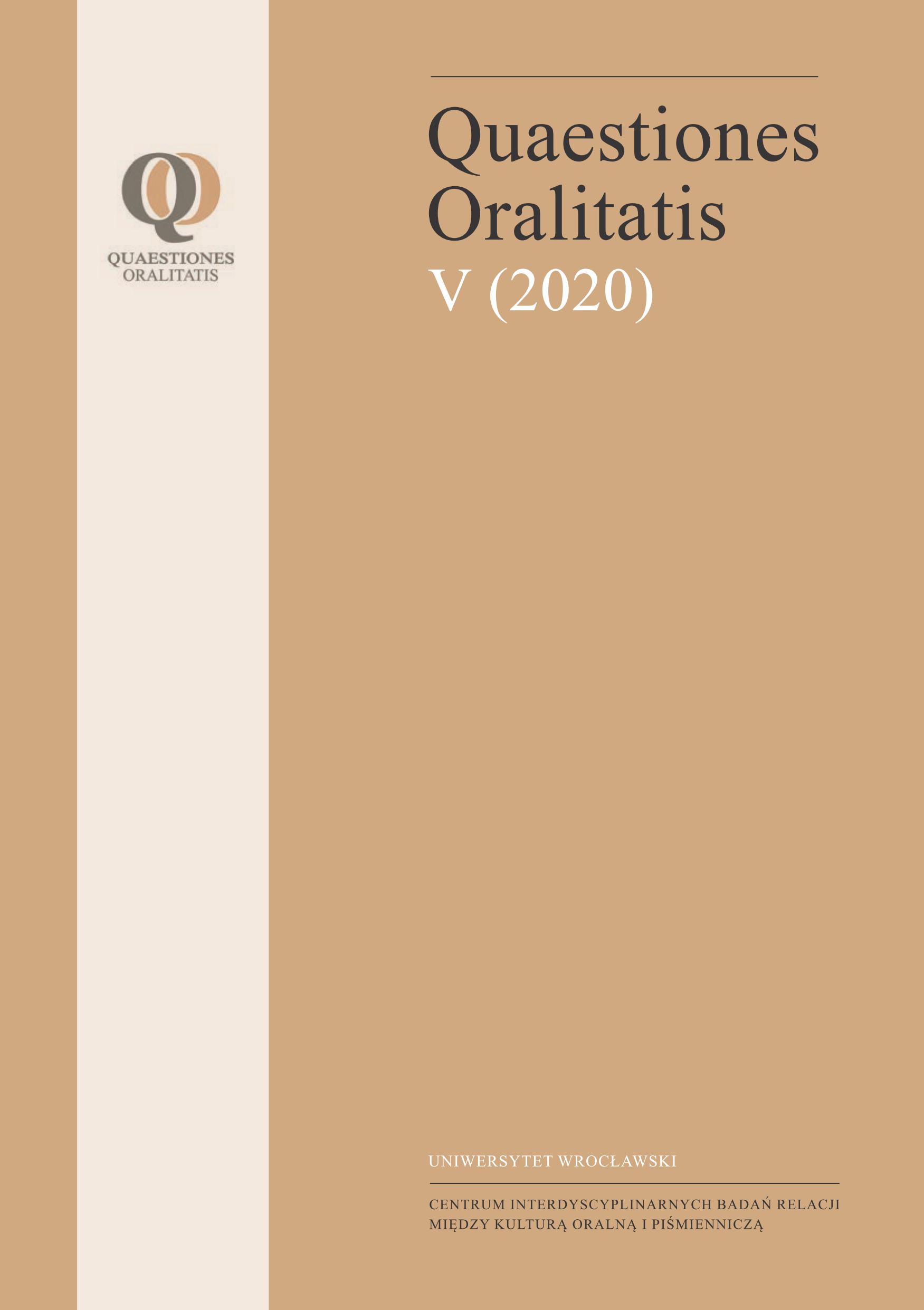
Keywords: commercial loans; ancient Israel; oral tradition; nokrî; monarchy; interest
The article discusses Deut 23,20–21 in the context of the nature of ancient Israel’s legislation and wider biblical and cultural contexts. It points that linguistic studies concerning the etymology and meaning of crucial Hebrew terms in the passage remain inconclusive. In turn, it proposes that the proper research on the issue of business and commercial loans among the Israelites should take into consideration a wider biblical (non-legislative) and cultural context of later monarchy. It also indicates that laws concerning loans expressed in the Torah were incomplete and that probably there was a fuller oral legal tradition behind the written laws. The article shows that there is an alternative way of reading the noun nokrî, as referring to economical status of an Israelite rather than to the ethnical distinctions between the Israeli and foreign peoples. Finally, it is proposed that two texts, one from OT sapiential literature (Proverbs 22:7), and the other from a narrative describing post-exilic situation (Nehemiah 5:1–5), support the thesis that Israelites customarily expected interest on all kinds of loans given to their fellow inhabitants, although their God commanded them not to charge interest from the needy poor people. It is concluded that Deut 23,20–21 stands in line with the earlier texts of Ex 22:24 and Lev 25:35–37 and that the Israelite might have lent at interest to his compatriots as business and commercial loans.
More...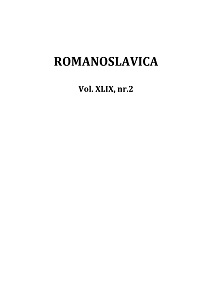
Keywords: Cyrillo-Methodian heritage; Orthodox religion; Romania; apocryphal texts; folk books; folk tradition;
Searching for the sources of Romanian religiosity we encounter many canonical and apocryphal texts that undoubtedly contributed to the creation and formulation of specific folk beliefs. A considerable chunk of these belong to the Cyrillo-Methodian heritage that permeated Romanian lands since the 12th century, gradually gaining control over the religious representations of Romanians. This tradition influenced the form of folk representations as well as symbolism of time related to the Orthodox calendar. This paper will present the body of the most significant Byzantine-Slavonic texts considered to be apocryphal, quasi-canonical or pseudo-canonical. I will analyze the new and old testament apocrypha, hagiographic legends, romances and novels and how they influenced the beliefs and customs of the Carpathian region in Romania. In Romania they are primarily considered to be the “folk books” (cărţile populare) and treated as texts designated for the people, and writings which immensely influenced the specific representations currently present in this culture. It is worth to emphasize, however, that in the Orthodox tradition they assumed a complementary role and were treated as sacred texts, equal to the canonical ones. At the same time they indirectly represented an outstanding collection of multiculturalism in ancient heritage – the Byzantine, Turkish-Arab, Hebrew and Latin traditions – embracing the old beliefs and spreading them on new lands with the assistance of the written word. The above-mentioned works came to Romania from the Orient and Byzantium, quite often accompanying the Slavic people. Many of these books found their way to the Athos mountain, and when the first relations between the Romanian principalities and Athos monks emerged, this literature was also introduced into Wallachia and Moldavia. The presence and circulation of these texts in the cultural domain is a source of multi-lateral and (due to people’s modifications) original beliefs supporting the uniqueness of Romanian culture.
More...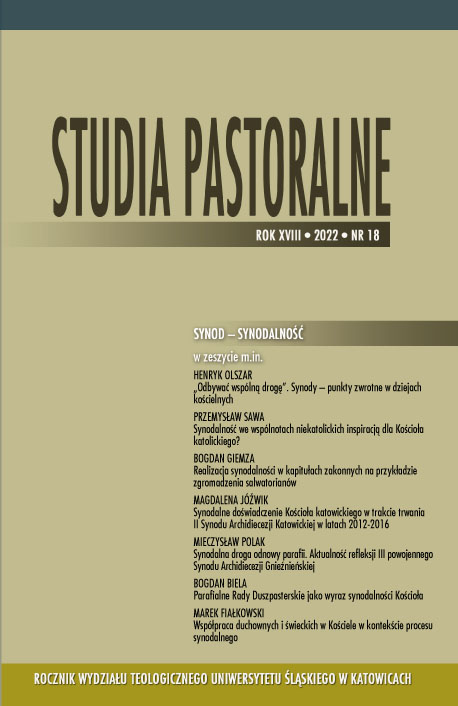
Keywords: biblical readings; euchological texts; historical-critical and contextual method; homily preaching; lectio divina; linguistic (semiotic) method; preparation of homilies
The author devoted this article to the issue of preparing a homily on the basis of euchological texts. He found the inspiration in the Homiletical Directorate published by the Congregation for Divine Worship and the Discipline of the Sacraments in 2015. This inspiration was provoked by the impression that they were given too little space in the above-mentioned directorate, especially the possible methods to be used in a view of the preparation of the homily. The directorium talks that to the spectrum inspiring homiletic creativity include, in addition to the readings from the Bible, typically liturgical texts, and above all, euchological formulas, nevertheless a more accurate reading of the document provokes an impression that the attention focused on biblical readings was definitely dominant in. The proposed method is developed from the patristic exegesis of the spiritual meanings of the Holy Scriptures lectio divina. In this method it is about biblical texts that belong to the canon of inspired books. Euchological formulas belong to an open catalog of texts. This is the reason of the thesis that the lectio divina method can be used as a model in the work on prayer formulas, still one should reach the methods typical of liturgical hermeneutics. The content of the study proposes making use of, while working on a homily on the basis of the euchological texts, the historical-critical and the linguistic methods. The combination of these methods allows a view of how the methodological steps correspond with each other, and thus confirm the rationality of the conducted argument, and the justification for the need to use adequate methods.
More...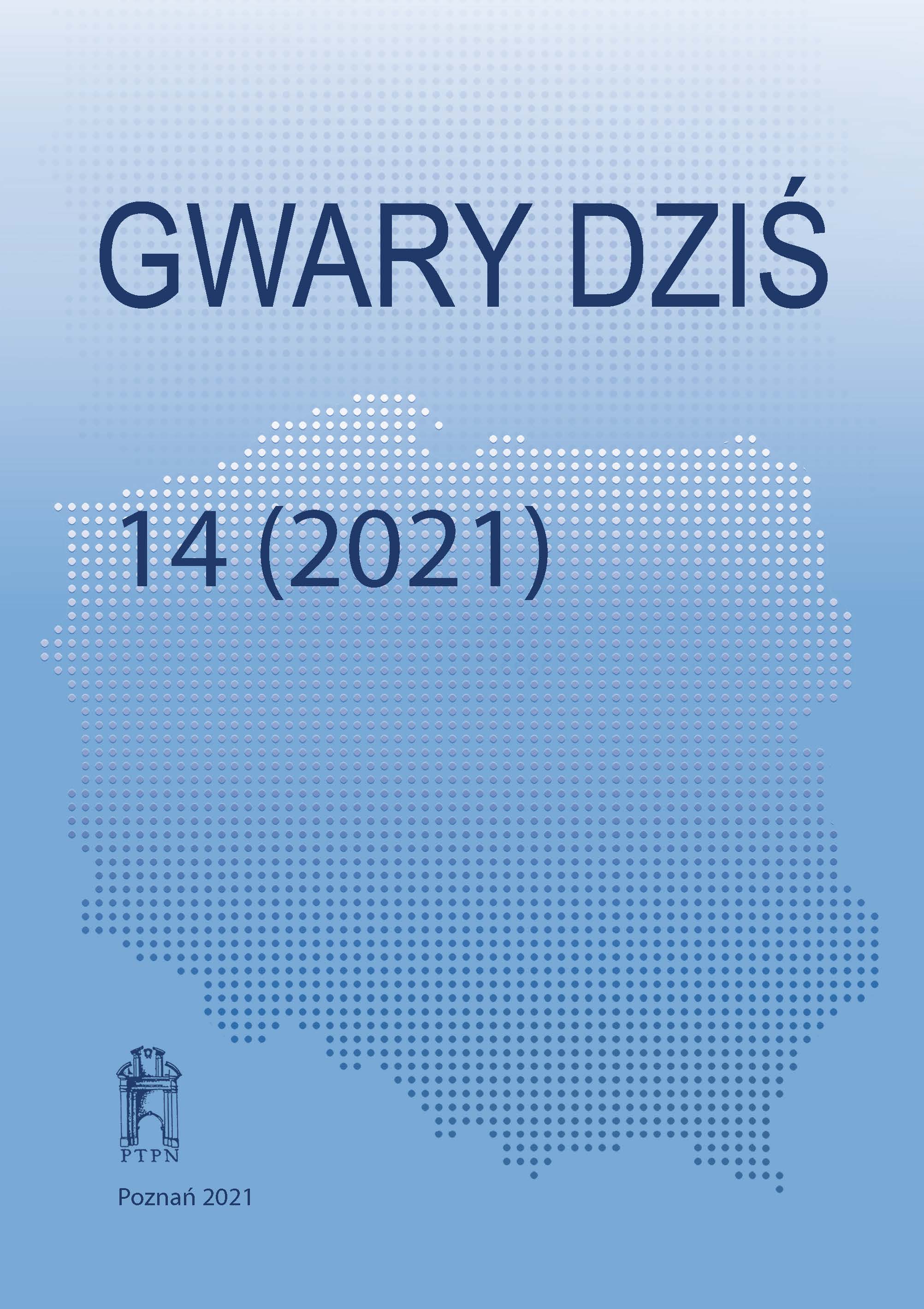
Keywords: linguistic changes in rural areas; texts written by villagers; dialect in atext; official style of village inhabitants
The recent civilization and culture-related transformtions in rural areas have created a need for interdisciplinary research that will capture the essence of these changes and will characterize them. To date, research has focused on the spoken language as the primary form of communication of villagers; they make use of written texts mainly to communicate with public administration institutions. Therefore, these texts pose a unique opportunity to gain insight into the linguistic competence of villagers related to communication, text-forming, and style, as well as their persuasion strategies. These documents also show the extent to which a local dialect is reflected in written texts. The value of these records has been confirmed by a study of documents submitted to social assistance centres in Lesser Poland. An analysis of the language material from other areas would allow to draw more general conclusions concerning the official language of villagers.
More...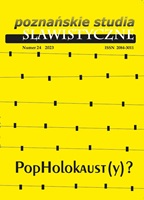
Keywords: Book review; Polyphony; Holocaust Fiction; Holocaust;
Review of: Wielogłos. Polskie, czeskie i słowackie teksty o Zagładzie Handbook of Polish, Czech, and Slovak Holocaust Fiction. Eds. Elisa-Maria Hiemer, Jiří Holý, Agata Firlej, Hana Nichtbur-gerová. Berlin: De Gruyter. 2021, 514 s.
More...